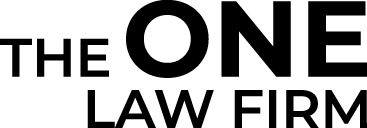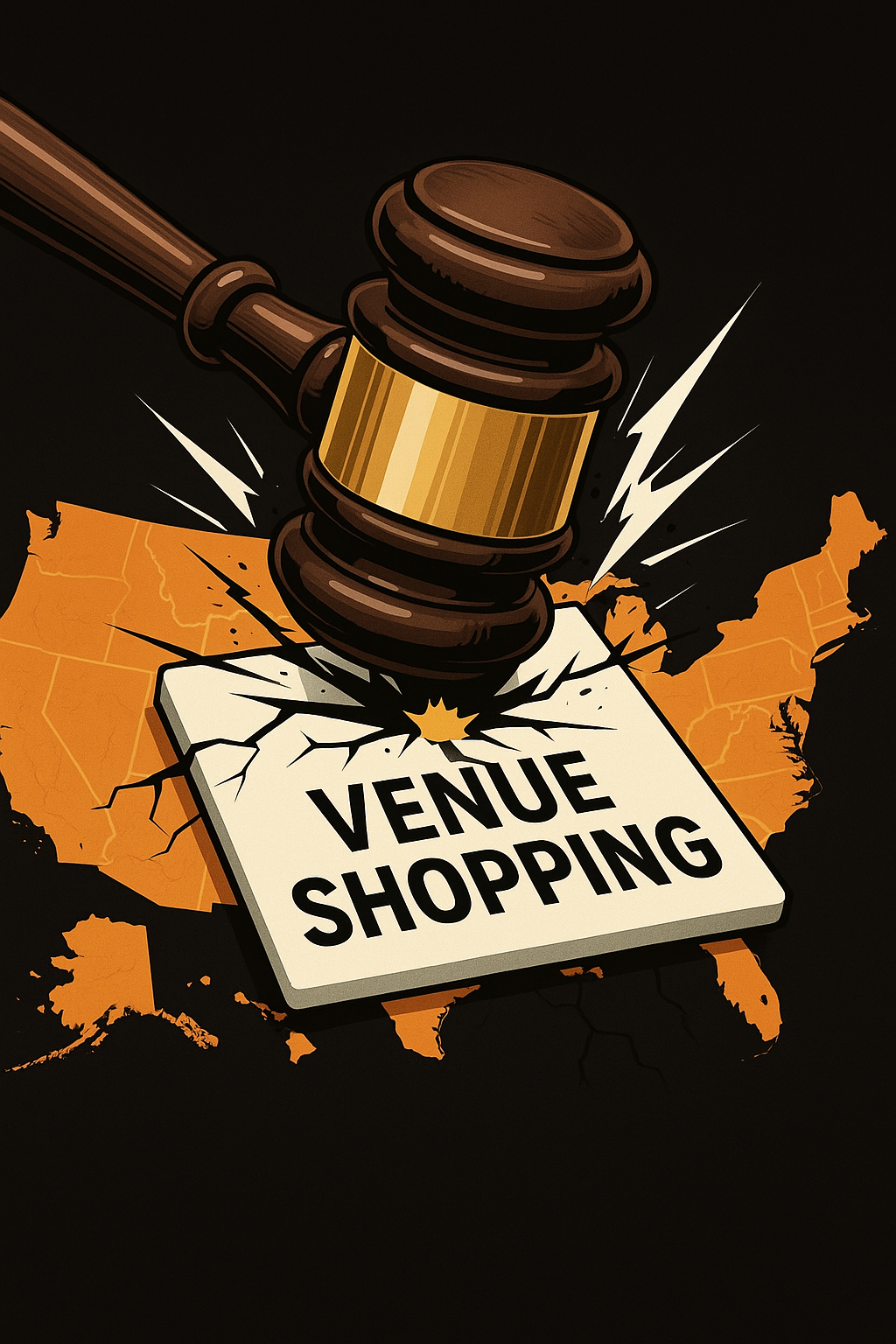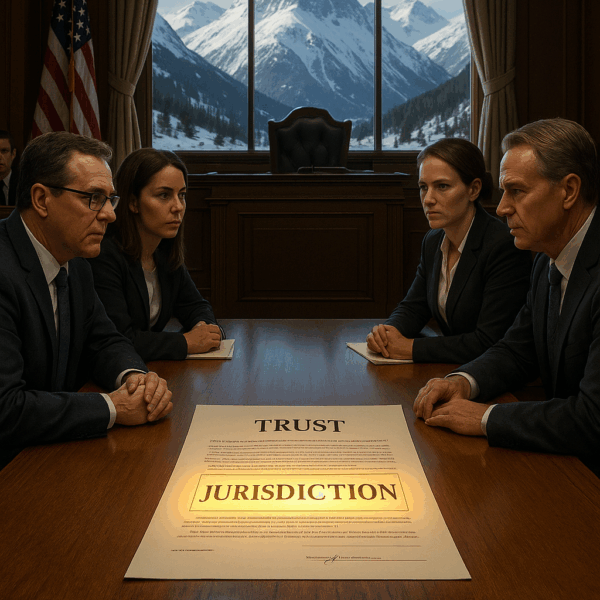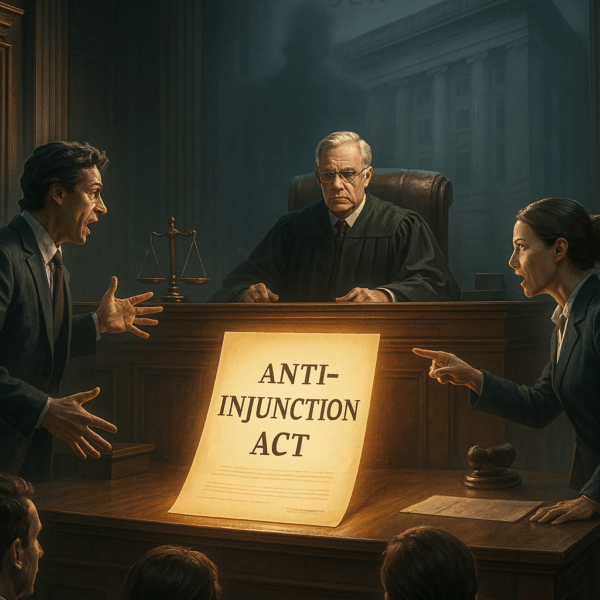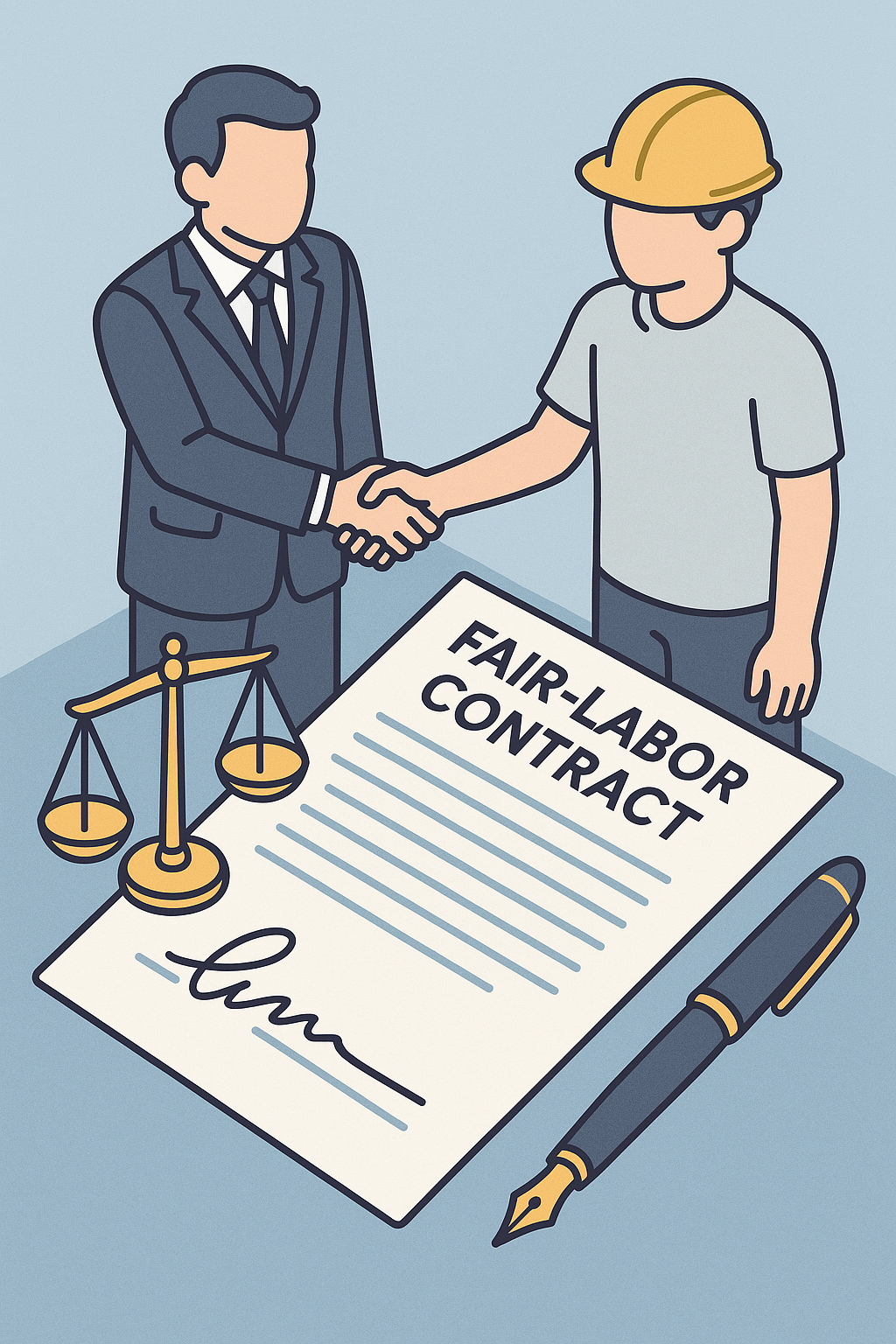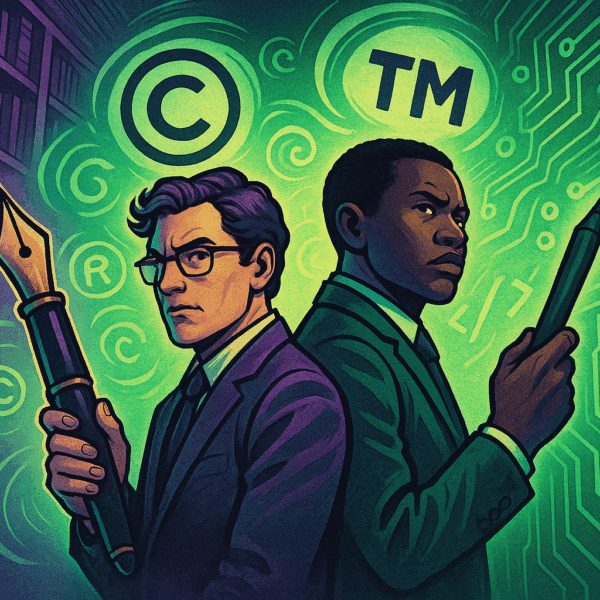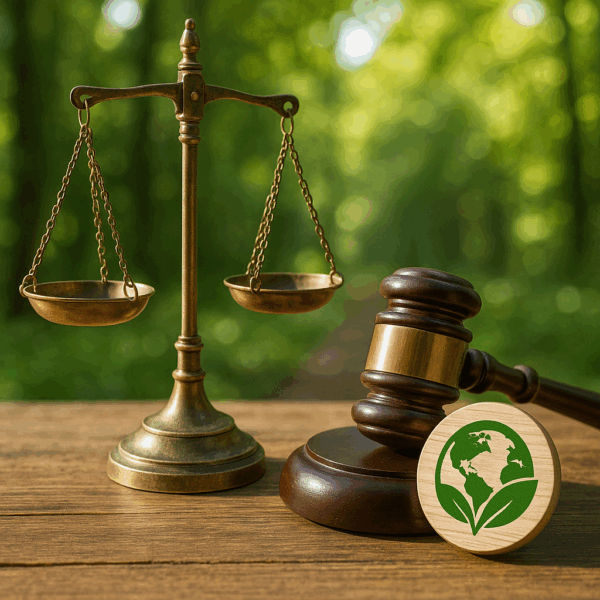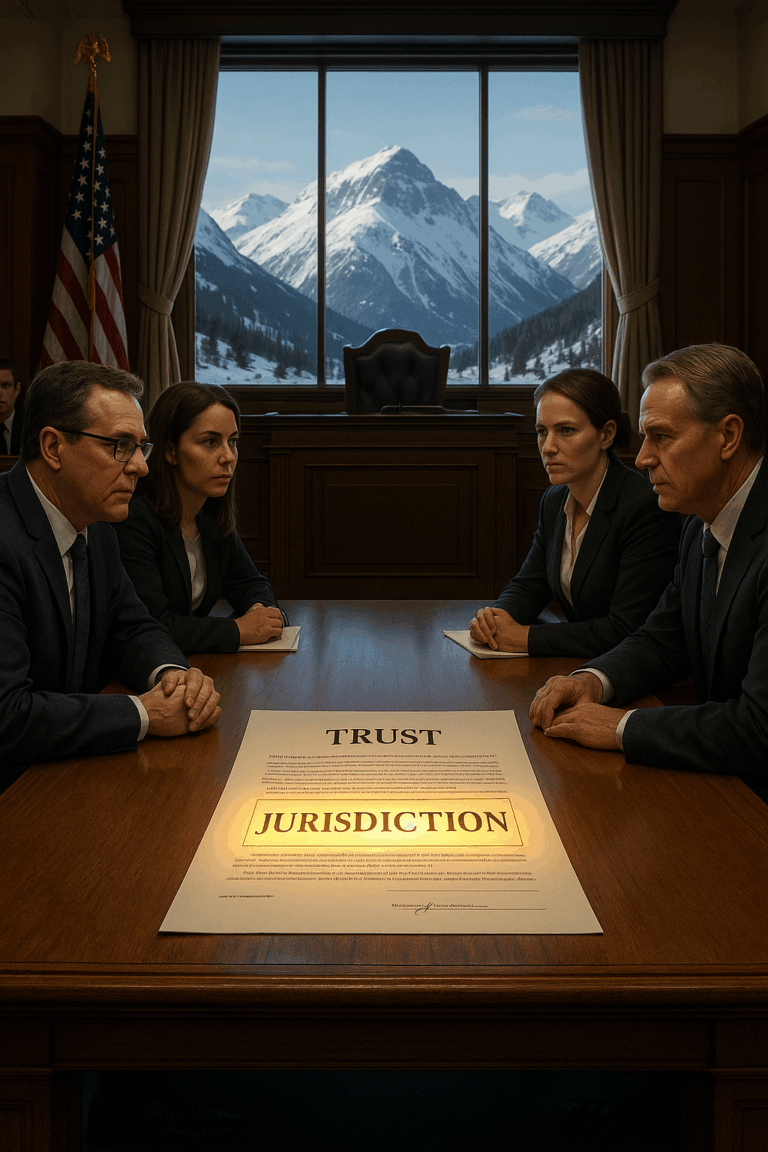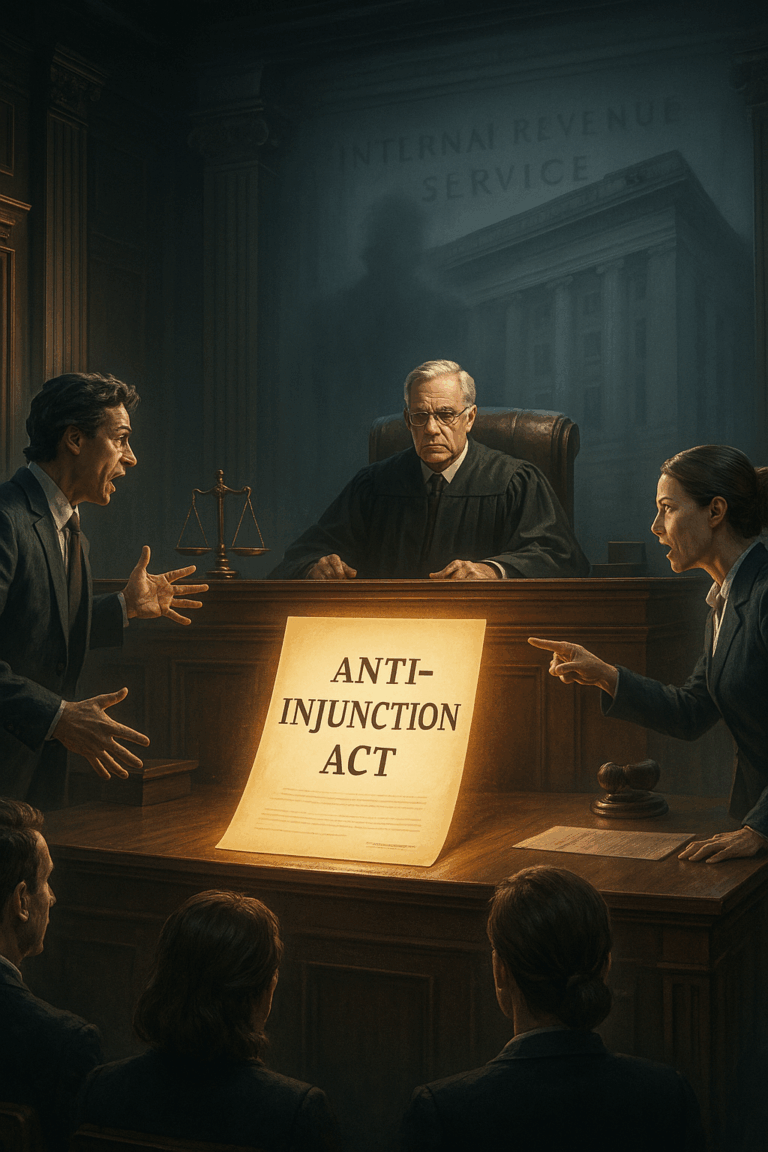By TheOneLawFirm.com
Filed under: AI copyright law, intellectual property, machine authorship
The Painting That Signed Itself
One summer afternoon in suburban Missouri, engineer‑turned‑inventor Stephen Thaler fed a prompt into his neural‐network “Creativity Machine.” Moments later the system produced a haunting digital image it titled A Recent Entrance to Paradise. Thaler did what any proud creator would do—he tried to copyright it.
What followed has become the marquee showdown over AI authorship in the United States. In Thaler v. Perlmutter the courts were asked a deceptively simple question: Can a non‑human own a copyright? The answer, so far, is an emphatic no—and the implications ripple far beyond one piece of digital art.
“Human creativity is the sine qua non of copyright protection,” District Judge Beryl A. Howell wrote, distilling two centuries of jurisprudence into twelve words that now stand between every generative‑AI model and the U.S. Copyright Office.
How the Case Unfolded
| Year | Milestone | Forum | Result |
|---|---|---|---|
| 2022 | Thaler submits the image with no human author listed | U.S. Copyright Office | Registration denied |
| 2022 | Thaler sues under the Administrative Procedure Act | D.D.C. | Case docketed as 1:22‑cv‑01564 |
| Aug 2023 | Cross‑motions for summary judgment | D.D.C. | Judge Howell sides with Copyright Office |
| Oct 2024 | Appeal argued | D.C. Circuit | Panel grills both sides on “personhood” |
| Mar 2025 | Opinion issued | D.C. Circuit | District court affirmed—no machine authorship |
Table 1: Procedural timeline of Thaler v. Perlmutter
The Legal Core
-
Statutory Text – The Copyright Act never defines author, but precedent—from Burrow‑Giles (1884) to the present—treats the word as “a human.”
-
Constitutional Bedrock – Article I empowers Congress to secure “Writings and Discoveries” of Authors. The framers plainly assumed people, not processors.
-
Administrative Consistency – For decades the Copyright Office has insisted on a human touch; even photographs taken by monkeys (Naruto v. Slater) failed the test.
“Copyright law has never stretched to accommodate creations made without human involvement.” —Judge Howell
Why This Matters to the IP Bar
-
Registration Strategy – If your client uses generative AI, document how humans select, edit, or arrange the output.
-
Contract Drafting – Add clauses allocating ownership of “AI‑assisted” works before the bots start brainstorming.
-
Portfolio Diversification – Consider patents, trade secrets, and trademarks where pure copyright protection may falter.
From Copyright to Patents: A Broader Pattern
The Thaler litigation is not an isolated skirmish. Dr. Thaler also fronts the better‑known “DABUS” patent saga, where courts likewise insist that only natural persons can be inventors. Across the pond, the U.K. Supreme Court recently echoed that stance, while South Africa bucked the trend and granted DABUS its first patent. Together these cases sketch a global patchwork of AI intellectual‑property rules—and no two jurisdictions ink the pattern the same way.
The Road Ahead
Congress is already flirting with statutory fixes. Draft bills imagine everything from sui‑generis “AI‑generated content” rights to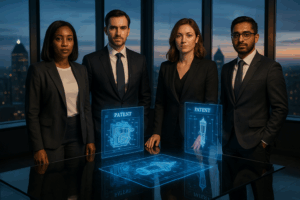 compulsory‑license regimes. Meanwhile, the U.S. Copyright Office is collecting public comments on how much human input is “enough.” Expect lobbyists from Hollywood to Silicon Valley to test those thresholds—hard.
compulsory‑license regimes. Meanwhile, the U.S. Copyright Office is collecting public comments on how much human input is “enough.” Expect lobbyists from Hollywood to Silicon Valley to test those thresholds—hard.
In the short term, the best practice is pragmatic:
Treat AI like a very smart intern. Let it brainstorm all it wants, but make sure a human edits, curates, and—crucially—owns the final cut.
“Until the legislature rewrites the rules, the courthouse door is closed to machines seeking the mantle of authorship.” —IP litigator quoted at this year’s ABA TechShow
Quick Reference: U.S. vs. International Positions on AI Authorship
| Jurisdiction | Pure AI Works Copyrightable? | Key Authority |
|---|---|---|
| United States | No | Thaler v. Perlmutter |
| United Kingdom | Yes, limited (database right) | CDPA § 9(3) |
| European Union | Debated | EU AI Act drafts |
| China | Case‑by‑case | Shenzhen Tencent v. Yingxun |
| South Africa | Yes (patent context) | DABUS patent grant |
Bottom Line
Thaler’s quest was part tech evangelism, part philosophical provocation—and entirely inevitable in a world where GPT generates prose and Midjourney paints planets. The courts answered with an old‑school principle: no hum an, no copyright. Until lawmakers redraw the map, creative professionals will need to keep at least one hand on the steering wheel—even if the AI is doing most of the driving.
Endnotes
-
Memorandum Opinion, Thaler v. Perlmutter, No. 1:22‑cv‑01564 (D.D.C. Aug. 18, 2023) U.S. Copyright Office
-
U.S. Court of Appeals for the D.C. Circuit, Thaler v. Perlmutter, Nos. 23‑5233/5234 (Mar. 2025) D.C. Circuit Court
-
D.C. Circuit Upholds Human Authorship Requirement in Thaler v. Perlmutter, IPWatchdog (Mar. 24, 2025) IP Watchdog
-
Dennis Crouch, “AI as Author: Thaler v. Perlmutter Now Before the DC Circuit,” Patently‑O (Apr. 2024) Patently-O
-
Jones Day Insight, Court Finds AI‑Generated Work Is Not Copyrightable (Aug. 2023) Jones Day
-
Dechert OnPoint, U.S. District Court Rules that AI‑Generated Artwork Is Not Eligible for Copyright (Aug. 2023) Dechert
-
Thaler v. Perlmutter case summary, FindLaw (2023) Findlaw
-
Naruto v. Slater, 888 F.3d 418 (9th Cir. 2018) PDF opinion Law.com Images
-
CAFC backs USPTO in AI‑Inventor Fight, IPWatchdog (Aug. 5, 2022) IP Watchdog
